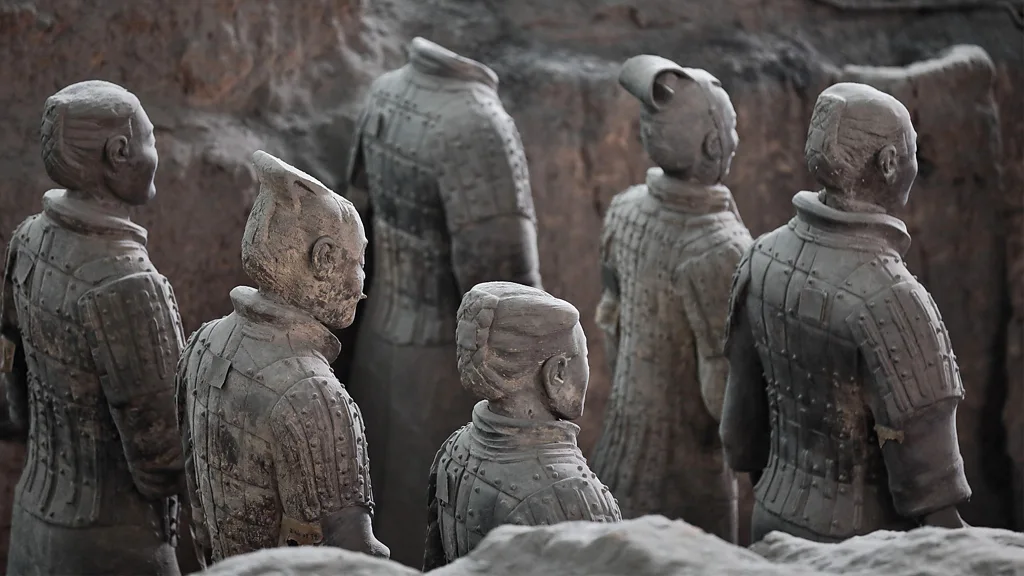Terracotta Warriors and Ancient Chinese Society
Fifty years after their accidental discovery by farmers digging a well, China’s renowned terracotta warriors are still captivating, offering insights into the ancient Qin Dynasty.
These life-size clay figures, found near the tomb of Emperor Qin Shi Huang, the first unified ruler of China, have provided valuable information about life during that era. From clothing styles to the origins of soldiers, detailed examinations of these warriors have enriched our understanding of ancient Chinese history.
Recently, a preliminary study conducted by Chinese researchers delved into the footwear of a kneeling archer, the only type of terracotta warrior excavated thus far with visible shoe soles. The study aimed to understand the role of footwear in the Qin army’s success. By replicating the warrior’s shoes using historical techniques and materials, researchers found that the shoes provided comfort, stability, and slip resistance, crucial for navigating various terrains.
The “thousand-layer” sole, composed of multiple layers of ramie sheets, showcased remarkable craftsmanship. Its design, divided into three sections with varying stitch patterns, aimed to optimize comfort and durability. Moreover, the absorbent fabric used in the sole would have provided traction in wet conditions, enhancing the soldiers’ agility.
Additionally, the study explored the vibrant colors of the terracotta warriors’ clothing, which were originally painted in vivid hues of reds, purples, and greens. Despite centuries of deterioration, some warriors still retain traces of their original colors. Chemical analyses of the pigments used revealed insights into ancient painting techniques and materials, shedding light on Qin fashion preferences.
The research also suggests that the terracotta warriors may have been based on real individuals, as evidenced by the variation in facial features among the statues. Studies comparing the warriors’ features to those of modern Chinese ethnic groups indicate resemblances, particularly to people from northern and western China.
These findings support the notion that the terracotta army was crafted to replicate Qin’s military forces, emphasizing the meticulous craftsmanship and artistic skill of the creators. As excavation efforts continue, more terracotta warriors will be unearthed, providing further insights into ancient Chinese civilization.
Ultimately, the terracotta warriors serve as a testament to the craftsmanship and ingenuity of ancient Chinese artisans, offering a glimpse into the military prowess and cultural richness of the Qin Dynasty.


















